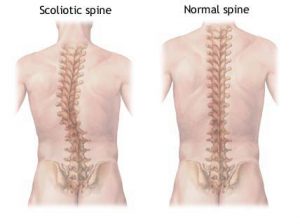 Scoliosis is a condition characterized by the abnormal curvature of the spine that causes a deviation to one side. It causes a physical deformity, making the spine look like the letter “C” or “S” instead of the letter “I”.
Scoliosis is a condition characterized by the abnormal curvature of the spine that causes a deviation to one side. It causes a physical deformity, making the spine look like the letter “C” or “S” instead of the letter “I”.
Advanced Spine Diagnosis and Expert Spinal Deformity Correction by Top Spine Surgeon in Mumbai
At D Spine Clinic in Mumbai, under the expert care of Dr. Dhanish Mehendiratta, we offer advanced spinal deformity correction surgery tailored to each patient’s needs. Our modern spine center specializes in treating conditions such as scoliosis, kyphosis, and other complex spinal deformities using minimally invasive spine surgery techniques. With a focus on precision spinal alignment, pain relief, and faster recovery, we combine clinical expertise with compassionate care to help you regain mobility and improve your quality of life.
What is Spinal Deformity?
Spinal deformity refers to abnormal curvature or misalignment of the spine, which can affect posture, mobility, and overall quality of life. Common types include scoliosis, kyphosis, and lordosis, each presenting unique challenges. At D Spine Clinic in Mumbai, we specialize in diagnosing and correcting spinal deformities using advanced surgical techniques, including minimally invasive deformity correction.
How Do Doctors Diagnose Scoliosis and Determine Its Severity?
Scoliosis is diagnosed through a combination of physical examination and imaging tests. During an initial evaluation, a doctor will review the patient’s medical and family history and perform a physical exam—often including the Adam’s Forward Bend Test, where the patient bends forward to help detect any abnormal spinal curvature or rib prominence. The doctor may also assess posture, shoulder height, and hip alignment.
If scoliosis is suspected, X-rays are typically ordered to confirm the diagnosis and measure the degree of spinal curvature using the Cobb angle. In some cases, additional imaging like MRI or CT scans may be used to evaluate the spinal cord or rule out underlying conditions. A curve greater than 10 degrees is generally considered scoliosis.
Spinal Deformity Classifications and Causes
- Scoliosis: Sideways curvature of the spine, often diagnosed in adolescents or adults.
- Kyphosis: Excessive forward curvature, leading to a hunchback appearance.
- Lordosis: Exaggerated inward curvature of the lower spine.
- Spondylolisthesis: Slippage of one vertebra over another, causing instability.
- Congenital Deformities: Structural abnormalities present at birth.
When to Consider Surgery for Spinal Deformity
- The spinal curve is progressive or severe (e.g., Cobb angle > 45–50°)
- The patient experiences debilitating back pain or nerve symptoms
- Non-surgical treatments like bracing or physiotherapy are ineffective
- There is spinal instability or deformity affecting posture, gait, or organ function
Schedule Your Spine Health Evaluation Today
Don’t let spinal deformities hold you back from living a pain-free, active life. Early intervention is key to preventing complications. Contact D Spine Clinic today to schedule a consultation with Dr. Dhanish Mehendiratta, one of Mumbai’s top spine surgeons. Let us guide you toward better spine health and lasting relief.
FAQs
The surgery typically involves realigning the spine using rods, screws, and bone grafts to stabilize the spine and correct the deformity. It may require spinal fusion, where two or more vertebrae are permanently joined. The procedure can be complex and is tailored to the specific condition and needs of the patient.
Recovery varies depending on the severity of the condition and the complexity of the surgery. Patients typically stay in the hospital for several days, followed by weeks to months of rehabilitation. Physical therapy plays a key role in regaining strength and mobility. Full recovery may take up to a year, but many patients experience significant improvement in pain and function.
As with any major surgery, there are risks such as infection, bleeding, nerve injury, or complications related to anesthesia. In spinal deformity correction, additional risks include hardware failure, non-union of fused vertebrae, and residual or recurrent deformity. However, these procedures are generally safe when performed by experienced spine surgeons, and outcomes have improved significantly with modern techniques.
Most patients can return to many or all of their daily activities after recovery, and in many cases, they experience improved mobility and quality of life. However, high-impact or contact sports may be restricted, especially after spinal fusion. Your surgeon and rehabilitation team will guide you through a safe return to work, exercise, and recreational activities based on your progress.







